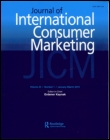
Argument quality plays an important theoretical and methodological role in persuasion research. Researchers frequently refrain from employing independent normative criteria to manipulate argument quality. Instead they use pretests to qualify arguments that evoke predominantly favorable thoughts as strong, and arguments that predominantly evoke unfavorable thoughts as weak. In this paper, we analyze weak arguments as they have been used in actual studies. These weak arguments ranged from arguments referring to less favorable consequences compared to their strong counterparts, to consequences that are irrelevant to the participants, or even to undesirable consequences thereby essentially functioning as counterarguments. We discuss the implications of this practice for our understanding of the persuasion process and our ability to provide evidence-based guidelines for message designers. We also provide guidelines on how to manipulate argument quality using normative criteria.
Hoeken, H., Hornikx, J., & Linders, Y. (2020). The importance and use of normative criteria to manipulate argument quality. Journal of Advertising, 49 (2), 195-201.



 According to Hall’s context theory, people from different cultures may react differently to complex messages. The current study is the first empirical examination of context theory’s role on message comprehension and appreciation. In a comparative survey-based study (N = 289), Belgian and Dutch participants judged 12 complex product advertisements with visual metaphors. As expected by context theory, perceived complexity was lower for Belgian (a higher-context culture) than for Dutch participants (a lower-context culture), and participants’ personal context culture score fully accounted for this difference. Similarly, ad liking was higher for Belgian than for Dutch participants, and again this difference was explained by context score.
According to Hall’s context theory, people from different cultures may react differently to complex messages. The current study is the first empirical examination of context theory’s role on message comprehension and appreciation. In a comparative survey-based study (N = 289), Belgian and Dutch participants judged 12 complex product advertisements with visual metaphors. As expected by context theory, perceived complexity was lower for Belgian (a higher-context culture) than for Dutch participants (a lower-context culture), and participants’ personal context culture score fully accounted for this difference. Similarly, ad liking was higher for Belgian than for Dutch participants, and again this difference was explained by context score. In international communication, adaptation of messages to the audience’s values has been prominently studied. In advertising, a meta-analysis of experimental studies showed that ads with culturally adapted value appeals are generally more persuasive and better liked than ads with culturally unadapted value appeals. This general effect was not observed for studies with Western Europeans. One explanation may be that these studies did not examine individualism-collectivism – whereas adaptation to this dimension has been shown to be very successful. In this paper, this explanation was tested. Six experiments were conducted in which participants from Belgium, the UK or the Netherlands judged an ad with an adapted, individualistic appeal or with an unadapted, collectivistic appeal. The experiments and a subsequent meta-analysis indicate that Western Europeans are not more persuaded by the culturally adapted than by the culturally unadapted value appeals based on individualism-collectivism. This result nuances earlier findings underlining the importance of cultural value adaptation
In international communication, adaptation of messages to the audience’s values has been prominently studied. In advertising, a meta-analysis of experimental studies showed that ads with culturally adapted value appeals are generally more persuasive and better liked than ads with culturally unadapted value appeals. This general effect was not observed for studies with Western Europeans. One explanation may be that these studies did not examine individualism-collectivism – whereas adaptation to this dimension has been shown to be very successful. In this paper, this explanation was tested. Six experiments were conducted in which participants from Belgium, the UK or the Netherlands judged an ad with an adapted, individualistic appeal or with an unadapted, collectivistic appeal. The experiments and a subsequent meta-analysis indicate that Western Europeans are not more persuaded by the culturally adapted than by the culturally unadapted value appeals based on individualism-collectivism. This result nuances earlier findings underlining the importance of cultural value adaptation Brands can position themselves as belonging to a foreign culture by using foreign languages in advertising. Foreign languages in ads have been suggested to be implicit country-of-origin (COO) cues. This paper examines the expectations that foreign languages operate through the COO effect (Study 1), and that they evoke associations (Study 2) and generate persuasive effects (Study 3) similar to COO mentions. The findings of the studies, employing different language slogans for different products, lend support to these expectations. Thus, foreign languages in advertising derive their effectiveness from the COO effect, and practitioners can use them to benefit from this effect.
Brands can position themselves as belonging to a foreign culture by using foreign languages in advertising. Foreign languages in ads have been suggested to be implicit country-of-origin (COO) cues. This paper examines the expectations that foreign languages operate through the COO effect (Study 1), and that they evoke associations (Study 2) and generate persuasive effects (Study 3) similar to COO mentions. The findings of the studies, employing different language slogans for different products, lend support to these expectations. Thus, foreign languages in advertising derive their effectiveness from the COO effect, and practitioners can use them to benefit from this effect.

